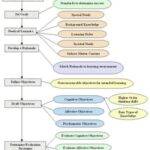When managing any project, it is important to keep the triple constraints of time, budget and performance in mind at all times. Time is managed by keeping the team on track in terms of the schedule and meeting deadlines. Budget is managed by controlling monetary resources according to the project financial plan. Time and money are concrete ideas which are easy to understand, and therefore, relatively easy to account for. But how does one manage performance? Performance measurements must be created for each project, based on the project scope and the goals and objectives of the stakeholders. Because performance measurements are specific to each project, they are more open to interpretation than time and budget. Three measures of performance which could be applied in a variety of settings are speed, accuracy, and volume. To demonstrate the power of these three measurements, they must first be defined. The three measurements have some similarities and some differences, so they will also be compared and contrasted. By providing real world examples, it will be shown that each of these three performance measurements is an effective method of assessing the success of a project outcome.
The first performance measurement which can be used to evaluate project success is speed. Speed represents the rate of movement of the production process or final product made during the project. In this sense, speed is different than time. Time measures the overall project schedule. Speed, on the other hand, represents the pace at which the final product functions. For example, Photo Pro is a Las Vegas digital photography company which specializes in the onsite printing of souvenir photos at corporate events. These photos normally print at a rate of 45 pictures per hour. This speed is a highly relevant measure of performance, because the customer pays for the photography service by the hour. If Photo Pro only produces 40 pictures per hour, the customer is not receiving the performance level promised. Speed could also be measured in miles per hour, if the project involved building a go-cart, for instance. It is important to understand that time would refer to the overall schedule for building the go-cart, and speed would measure the performance level of the final product.
Another useful performance measure is accuracy. At Photo Pro, each picture printed onsite must be of the utmost quality in order to live up to the company’s reputation and meet the client’s expectations. When the onsite printers malfunction, the pictures become discolored, striped, or otherwise defective. It is important to Photo Pro that defective photos are minimized at every event. The accuracy of the printers is measured in the proportion of defects to total photos printed. If 150 pictures are printed at an event, and 4 are defective, then the defect proportion is .026, and the accuracy proportion is .973. Photo Pro strives for an accuracy ratio of .95 or greater at every event. This is an important measure of performance, because it represents how well the system that the project put together actually functions. A project team could construct a product on time and on budget that is highly faulty – a defense missile, for example. Regardless of the fact that the project was successful within two of the constraints, if it is not accurate, it fails to meet the performance constraint.
The third useful measurement for performance is volume. At Photo Pro, volume is measured in total number of quality pictures printed and distributed to customers at an event. At a three hour event, the company would expect to produce a volume of 135 printed photos. This is different than speed: to illustrate, a printer could go down at an event and slow production, but the onsite manager could go into overtime to ensure that the promised number of pictures are delivered. In that case, the performance measure of speed would be less than expected, but overall the volume measurement would be met successfully. Another example would be an event promoter. The promoter can throw a great party that the guests all enjoy, but to determine the success of their marketing and promotional team, it is important to measure the total volume of attendees.
The three performance measures of speed, accuracy, and volume are all important indicators of project performance. They are similar in that they reveal exactly how successful the project is, irrespective of the timeframe and budget. The three measurements all allow benchmarks to be set, which represent the performance that project leaders or executives expect the project team to produce. Such benchmarks should always meet the “SMART” requirements, being specific, measurable, assignable, realistic, and time-oriented. Speed, accuracy, and volume are all specific, measurable, and assignable, because they are precise indicators that are able to be gauged, and someone can be responsible and accountable for their success.
Speed, accuracy, and volume are also similar in the broad range of project applications for which they are useful. Speed could measure the performance of a go-cart, a missile, a production line, or even a home sale. Accuracy could determine the success of a satellite guidance system, a baseball training camp, or a new model firearm. Volume could measure the hits on a new website, the capacity of a washing machine, or the attendees at a charity event. All three of these measurements are easily applicable to the performance constraint of a given project.
Although the three performance measurements are all similar, they are also quite different. One important difference is in the type of measurement. Speed and volume are always quantifiable measures. Speed will always be represented by a rate, such as miles per hour, beats per minute, or rotations per second. Volume will also be measured by a quantifiable number such as gallons, number of hits, or number of attendees. Accuracy, on the other hand, could be a qualitative measure. When planning a wedding, for example, accuracy is based on how well the event unfolds, as according to plan. This type of accuracy is not easily expressed as a number, percentage, or ratio. Sometimes accuracy can relate more to the quality or character of the finished product or process. In those instances, another performance indicator which is more clearly measurable may be more appropriate in order to conform to the “SMART” requirements of a well-defined objective.
In conclusion, three performance indicators have been defined which represent methods of gauging the success of a project’s finished product or process. Speed measures the rate of movement or happening in the final product. Accuracy measures the quality or correctness of the project’s deliverable, and volume measures the amount which is produced. These three measurements are all similar in that they are specific, measurable, assignable indicators by which a project’s performance can be evaluated. They are also each applicable to a broad range of potential projects. Nonetheless, the three measurements are also different in the way they are quantified. Speed is represented as a rate, volume as an amount, and accuracy varies between being quantitative and qualitative. Overall, these three performance measurements are a useful way to assess how successfully the team has met the project scope, goals and objectives.







